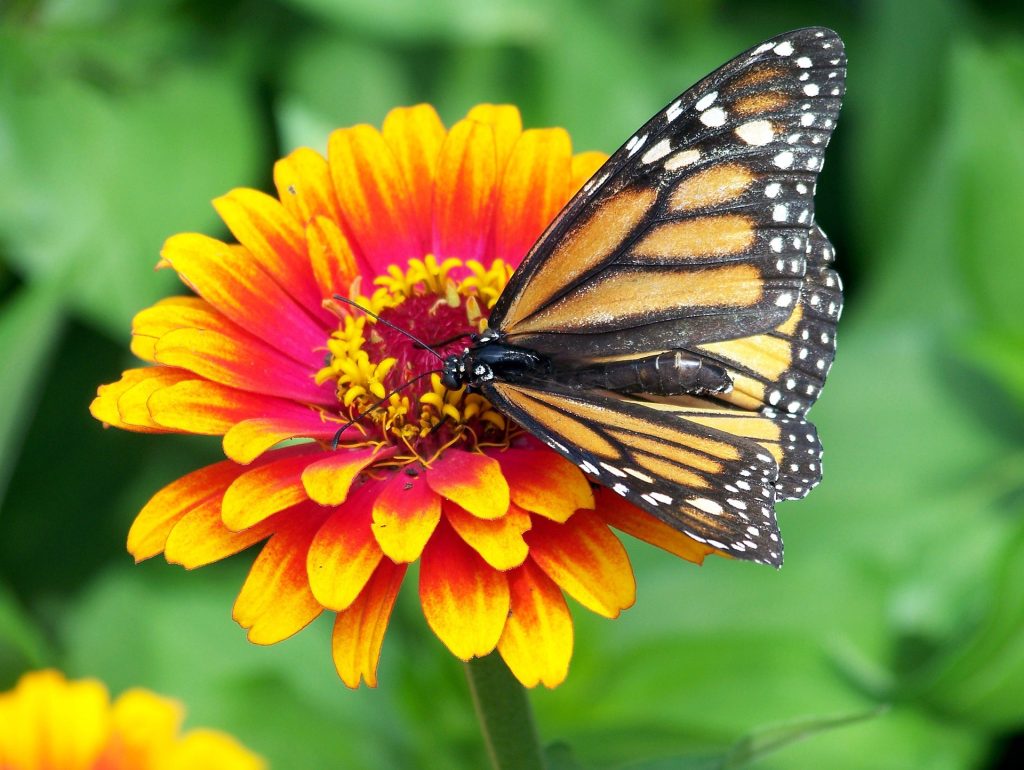The Best Ways To Boost The Rapidly Declining Monarch Butterfly Population
To help boost the monarch butterfly population, plant native flowers and milkweed, and cut back on fertilizer and yard chemicals.
This article is more than 2 years old

The easily identifiable butterflies are dwindling in population due to habitat loss, increased pesticide use, extreme weather, and other factors. The monarch butterfly population has recently been estimated to have reduced by 25 percent. Everyone can take steps to keep this vital insect off the endangered species list.
Monarch Butterfly Migration
The Eastern migratory population of monarch butterflies travels from Canada, through the United States, to Mexico, and back. During this migration, the insects breed and lay eggs on host plants. The population of orange and black butterflies spends time hibernating in the forests of Mexico.
There are several migration paths Monarch butterflies take that span across the entire United States. The insects can travel up to 100 miles a day. Additionally, the entire migration trip takes about two whole months to complete.
Who Can Help
While many factors contribute to the decline in the population of the Monarch butterfly, there is a small step that average citizens can take to combat this issue. Texas citizens, in particular, have an opportunity to play a vital role in helping to mitigate the declining population due to the geographical location in relation to the hibernation area of the insects. However, citizens in every state should take the same steps that Texans do to ensure the survival of the Monarch butterfly population.
How To Help
One of the main things that any person can do is plant specific plants. In particular, the monarch butterfly population uses the milkweed plant to lay their eggs. The loss of this valuable habitat can be attributed to the increased use of pesticides.
Planting milkweed in gardens, yards, and public areas is vital to help the Monarch butterfly population. Aside from laying eggs on milkweed, the monarch caterpillars eat a diet consisting only of milkweed. Planting milkweed will ensure the insect, in all stages, has what it needs to thrive.
In addition to milkweed, other plants can be planted. When gardening with our winged friends in mind, focus on cone-shaped flowers and nectar plants. Echinacea, black eyes Susans, butterfly bush, marigold, yarrow, and ironweed are a few plants to plant for monarch butterflies.
Native plants should also be planted. Working with a local nursery or reputable plant dealer can ensure you purchase and plant quality native plates that are vital to the monarch butterfly population. When planting, make sure your plants are spaced out.
Other Ways To Contribute
Many American strive for a picturesque green yard that is neatly trimmed and perfectly edged. While this is pleasing to the eyes, it is horrible for the environment. In addition to planting flowers that benefit the Monarch butterfly during their migration trip, stop using so much weed killer, fertilizer, and so many unnecessary chemicals in your yard.
As more houses and apartments are being built, animals and insects are being kicked out of their homes and facing a natural habitat loss. This is why it is crucial to create oases within yards in the form of gardens and carefully designed habitats. More people should strive to have a yard full of native plants, creating a diverse ecosystem that supports local insects and animals.



